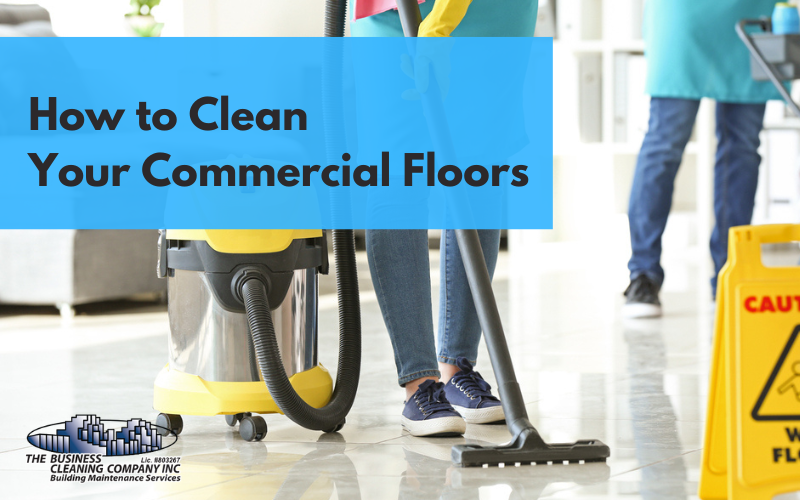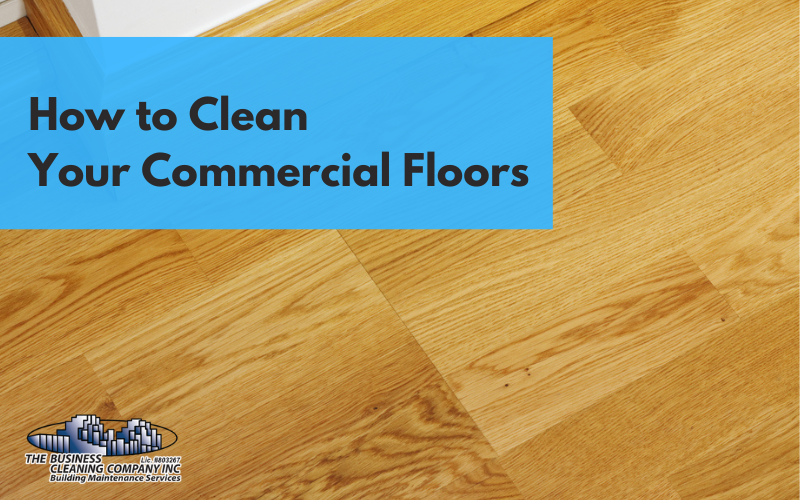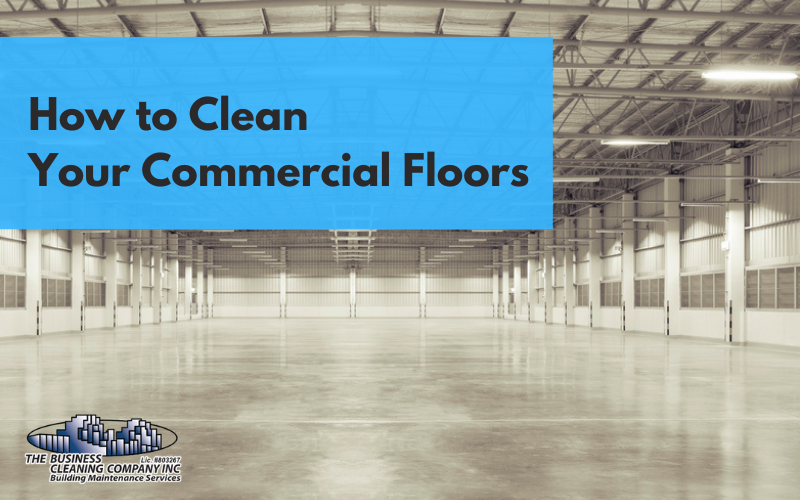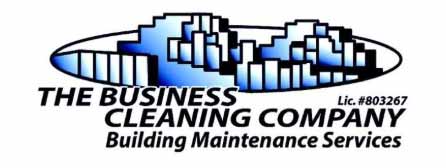How To Clean Your Commercial Floors

It’s no secret that first impressions count. When customers or clients visit your business, the condition of your floors is one of the first things they’ll notice.
That’s why it’s important to keep your commercial floors clean and well-maintained at all times. Not only will this create a more professional appearance, but it will also help to extend the life of your flooring.
When it comes to commercial flooring, there are a few different types that you might encounter. Each type of flooring will require its own specific cleaning method in order to keep it looking its best. In this guide, we’ll go over how to clean five of the most common types of commercial floors.
Let’s get started!
Hardwood Floors
When it comes to hardwood floors, there are a few things you need to keep in mind to clean them properly.
First of all, you should never use water or any other liquid on your hardwood floors. This can damage the wood and cause warping. Instead, stick to dry cleaning methods.
One of the best ways to clean hardwood floors is with a microfiber mop. Microfiber is great because it picks up dirt and dust without pushing it around as a traditional mop might. Plus, it’s gentle on the floors so you don’t have to worry about damaging them.
Another great way to clean hardwood floors is with a vacuum cleaner that has a soft brush attachment. This is perfect for getting rid of any dirt or dust that might be trapped in crevices or corners. Just make sure that you don’t use the vacuum cleaner on high because it could damage the floors.
If you have any tough stains on your hardwood floors, you can try using a store-bought wood floor cleaner or making your own. For a natural option, mix equal parts of water and white vinegar.
Then, apply it to the stain with a clean cloth and scrub until it’s gone. If you want something a little stronger, you can use 1/4 cup of bleach per gallon of water. Again, apply this to the stain with a cloth and scrub until it disappears.
No matter what method you use to clean your hardwood floors, the most important thing is to be gentle. These floors can last for many years if they’re properly cared for, so it’s worth taking the time to do it right.

Tile Floors
How to Clean Commercial Tile Floors
As a leading provider of top-notch commercial cleaning services, we understand the importance of maintaining pristine tile floors in business establishments. Clean and well-maintained floors not only enhance the overall appearance of your commercial space but also contribute to a hygienic environment for employees and customers alike. In this comprehensive guide, we will walk you through the step-by-step process of cleaning commercial tile floors, providing you with valuable insights and expert tips to ensure spotless surfaces that outshine your competitors. Let’s dive in!
1. Preparing for the Cleaning Process
Before you begin cleaning your commercial tile floors, it’s essential to gather the necessary tools and materials. Here’s a list of items you’ll need:
- Broom or vacuum cleaner with a hard floor attachment
- Mop and bucket
- pH-neutral floor cleaner
- Microfiber mop or sponge mop
- Soft-bristled brush or scrubber
- Clean towels or rags
- Safety goggles and gloves (optional, but recommended)
2. Clearing the Floor Area
To streamline the cleaning process and ensure efficient results, start by removing any obstacles or furniture from the floor area you intend to clean. This will give you a clear space to work with and prevent potential damage to the furniture.
3. Sweeping or Vacuuming
Before mopping, it’s crucial to remove loose dirt, dust, and debris from the floor surface. Use a broom or vacuum cleaner with a hard floor attachment to sweep or vacuum the entire area. Pay special attention to corners and hard-to-reach areas where dirt tends to accumulate.
4. Choosing the Right Cleaning Solution
Selecting an appropriate cleaning solution is key to achieving optimal results. It’s recommended to use a pH-neutral floor cleaner specifically designed for tile surfaces. Avoid using harsh chemicals or acidic cleaners, as they can damage the tile and grout over time. Dilute the cleaner according to the manufacturer’s instructions.
5. Mopping the Floor
Now it’s time to mop the floor using the diluted cleaning solution. Dip the mop into the bucket, wring out the excess liquid, and begin mopping the tile surface in a back-and-forth motion. Make sure to cover the entire area systematically, working your way from one end to the other.
For stubborn stains or grime, you can use a soft-bristled brush or scrubber to gently agitate the affected areas. Avoid using excessive force or abrasive tools that can scratch the tile surface.
6. Drying and Buffing
Once you have thoroughly mopped the floor, allow it to air dry or use clean towels or rags to speed up the drying process. Ensure that no moisture remains on the surface to prevent slips or accidents. Afterward, you can use a dry mop or buffing machine to give the tile floor an extra shine.
7. Regular Maintenance and Preventive Measures
To maintain the cleanliness and longevity of your commercial tile floors, it’s important to establish a regular maintenance routine. Here are a few preventive measures to consider:
- Place entrance mats at doorways to trap dirt and moisture.
- Promptly clean up spills or stains to prevent them from settling.
- Implement a scheduled cleaning program to ensure consistent upkeep.
- Consider applying a sealant to protect the tile and grout from stains and damage.
By following these maintenance practices, you can extend the lifespan of your commercial tile floors and create a lasting impression on visitors and potential customers.
8. Seeking Professional Cleaning Services
While regular maintenance goes a long way, it’s advisable to seek professional cleaning services periodically. Professional cleaners have the expertise, specialized equipment, and knowledge to tackle tough stains, restore the luster of your tiles, and provide a deep clean that surpasses ordinary DIY efforts.
Vinyl Floors
Vinyl floors are a popular choice for commercial spaces because they are durable and easy to maintain. However, vinyl floors can become stained and dirty over time, so it is important to know how to clean them properly. We will discuss the best ways to clean vinyl floors at a commercial level.
The first step in cleaning vinyl floors is to sweep or vacuum them to remove any dirt or debris. Be sure to use a soft-bristled brush attachment on your vacuum cleaner to avoid scratching the floor.
Next, you will need to mop the floor with a mild cleaning solution. You can make your cleaning solution by mixing warm water with white vinegar or dish soap. Avoid using harsh chemicals or cleaners that contain ammonia, as these can damage the vinyl floor.
Once you have mopped the floor, you will need to dry it completely to prevent water damage. You can either air dry the floor or use a towel to dry it.
If you notice any stubborn stains, you can pre-treat them with a commercial spot cleaner before mopping. Once the floor is clean and dry, you can apply a vinyl floor polish to protect the surface and give it a shine.
Follow these steps regularly to keep your vinyl floors looking their best. If you have any questions about how to properly clean vinyl floors, be sure to consult a professional.

Concrete Floors
If you have a commercial property with concrete floors, then you know how difficult it can be to keep them clean. There are several ways to clean concrete floors, but some are more effective than others.
One of the most important things to do when cleaning concrete floors is to remove any dirt or debris that may be on the surface.
This can be done by sweeping or vacuuming the floor. If there is heavy dirt or debris, you may need to use a power washer.
Once the floor is free of dirt and debris, you can start cleaning it with a detergent designed for concrete floors.
You will want to use a detergent that is specifically designed for concrete floors because they are tough and can withstand the heavy cleaning that is required.
After you have used the detergent to clean the floor, you will want to rinse it off with clean water. You may also need to repeat the process if there are stubborn stains or dirt that has been left behind.
Once you have cleaned the floor, you will want to protect it from future stains and dirt by sealing it. There are several sealants on the market that are specifically designed for concrete floors. By sealing the floor, you will be able to keep it looking its best for years to come.
If you follow these steps, you will be able to effectively clean your concrete floors and keep them looking their best.
Be sure to use the proper products and follow the instructions carefully to ensure that you do not damage the floor. With a little bit of care, your concrete floors will last for many years.
Laminate Floors
When it comes to cleaning laminate floors, the best way to approach it is by using a two-step process. First, you’ll want to sweep or vacuum the floor to remove any loose dirt or debris. Then, you’ll need to mop the floor using a gentle cleanser.
Here are some tips on how to effectively clean laminate floors:
Sweeping And Vacuuming
The first step in cleaning laminate floors is to sweep or vacuum them to remove any loose dirt or debris. Be sure to use a soft-bristled brush attachment when sweeping or vacuuming so as not to scratch the surface of the floor.
Mopping
Once you’ve swept or vacuumed the floor, you’ll need to mop it using a gentle cleanser. You can either use a store-bought laminate floor cleaner or make your solution by mixing 1 part white vinegar with 3 parts water.
If you choose to use a store-bought cleaner, be sure to read the label carefully to ensure that it is safe for laminate floors.
Once you’ve mixed your solution, dampen a mop in it, and then wring it out so that the mop is only slightly damp. Mop the floor in small sections, taking care not to saturate the mop head.
Drying
After you’ve mopped the floor, be sure to dry it completely with a clean, dry towel. This will help to prevent streaks and water spots from forming on the surface of the floor.
Preventing damage
To help prevent damage to your laminate floors, be sure to avoid using harsh chemicals or abrasive cleaners. Also, be sure to place mats at all entrances to the home so that dirt and debris are not tracked onto the floor.
In addition, it’s important to vacuum or sweep the floor regularly to keep dirt and debris from building up. By following these simple tips, you can keep your laminate floors looking new for years to come.
Cleaning your commercial floors doesn’t have to be difficult or time-consuming. With these simple tips, you can keep your floors looking great year-round with very little effort.

Ready to hire a commercial cleaning company?
The cleanliness of your building is one aspect that impacts how customers perceive the quality. A professional cleaning company can help you achieve this feeling, which leads them into believing they’ve walked into an established store with well-maintained equipment and fixtures! The Business Cleaning Company provides top-notch customer service as well as high-standard cleaning for all types of retail environments; contact us today so we could give more information about our expert cleaners or receive a free custom quote: 1 (800) 317 2636





